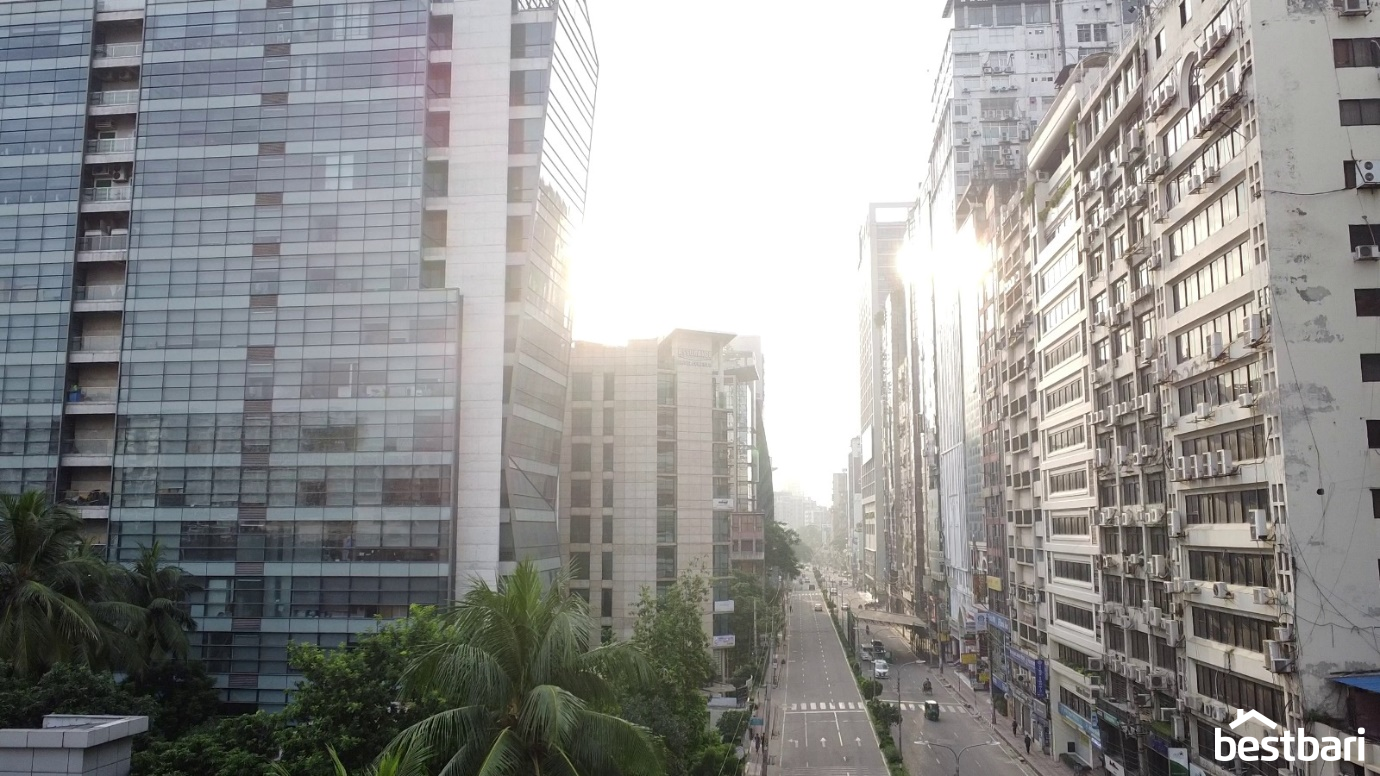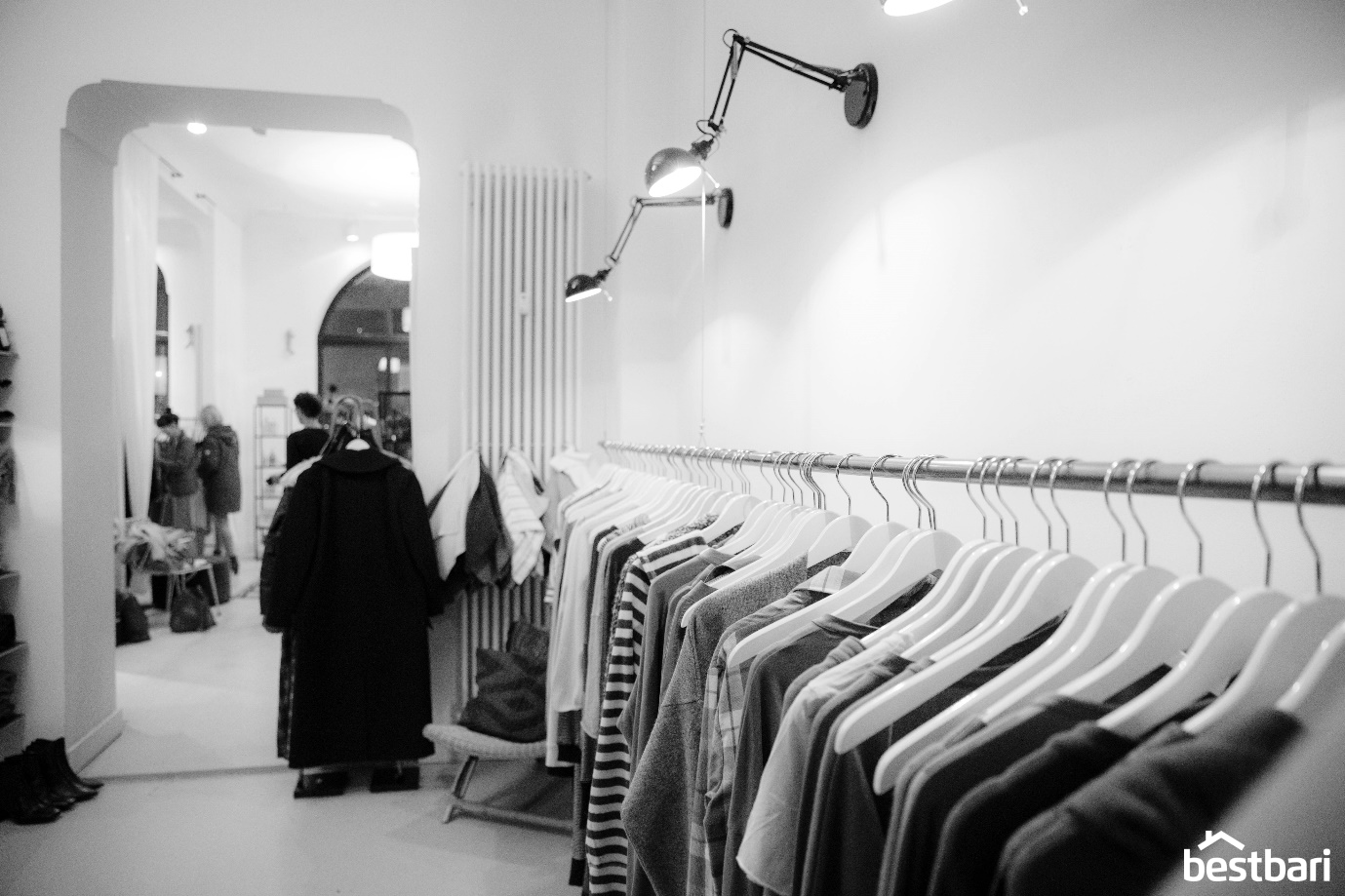
Reading time: 5 minutes, Category: Property Trends
Are you a business owner looking to buy, sell or rent commercial property in Dhaka? Then look no further, BestBari trusted team of specialists is here to help you sell BD properties flats at the best prices.
The retail landscape in Bangladesh is undergoing a significant transformation, with the rise of e-commerce reshaping consumer habits, particularly in urban hubs like Dhaka. This extensive blog post examines the evolving dynamics between traditional retail spaces and the burgeoning e-commerce sector, shedding light on the ensuing challenges, opportunities, and forward-thinking trends that are redefining retail in Bangladesh.
E-commerce: A Digital Revolution in Retail

The exponential growth of e-commerce in Bangladesh has revolutionised the retail landscape, propelled by advancements in technology and a notable shift towards digital consumption. Esteemed platforms such as Daraz, boasting a network of over 30,000 sellers, and Chaldal, a prominent online grocery provider, are spearheading this transformative shift.
These online retail platforms offer consumers an unparalleled array of products and unparalleled convenience, fundamentally altering the retail experience. This surge in e-commerce has democratised access to goods and services, empowering both consumers and businesses alike. As e-commerce continues to thrive and evolve, it is poised to play an increasingly integral role in shaping the future of retail in Bangladesh.
The e-commerce market in Bangladesh is poised for substantial growth, with projections indicating an annual expansion of 20%. According to the e-Commerce Association of Bangladesh (e-CAB), this upward trajectory is anticipated to propel the market to a valuation exceeding $3 billion by 2023. This robust growth forecast underscores the increasing prominence of e-commerce as a significant driver of economic activity in the country. As digital connectivity expands and consumer confidence in online transactions grows, the e-commerce sector is primed to play a pivotal role in shaping Bangladesh’s commercial landscape in the years ahead.
Urban centres like Dhaka, boasting internet penetration rates surpassing 70%, serve as the epicentres of the digital shopping revolution, creating an environment conducive to the growth of e-commerce. With a large population of tech-savvy consumers and widespread access to the internet, cities like Dhaka provide fertile ground for the expansion of online retail platforms. The convenience and accessibility offered by e-commerce resonate strongly with urban dwellers, driving the adoption of digital shopping practices. As urbanisation and digitalisation continue to accelerate, these urban centres are poised to remain at the forefront of Bangladesh’s e-commerce evolution, driving further growth and innovation in the sector.
Traditional Retail in the Face of Digital Expansion

The ascent of online shopping presents a mixed bag of opportunities and challenges for traditional retail outlets, compelling them to adapt in the face of digital competition. While e-commerce offers consumers unparalleled convenience and access to a wide range of products, it also poses a significant threat to brick-and-mortar stores.
Traditional retailers must innovate and evolve their business models to stay relevant in an increasingly digital world. This may involve enhancing the in-store experience, integrating online and offline channels, or diversifying product offerings to meet changing consumer demands. By embracing technology and embracing change, traditional retailers can not only survive but thrive in the era of online shopping.
Challenges Confronting Brick-and-Mortar Stores
Renowned shopping districts in Dhaka, including the bustling Gulshan Avenue, are experiencing a notable shift in consumer behavior, with reports indicating a decrease in foot traffic of up to 30%. This decline can be attributed to the growing preference for the convenience and accessibility offered by online shopping.
As more consumers opt to browse and purchase goods from the comfort of their homes or on-the-go via mobile devices, traditional brick-and-mortar retailers are grappling with the impact of changing shopping habits. To remain competitive in this evolving landscape, retail establishments in shopping districts like Gulshan Avenue may need to adapt their strategies, such as integrating digital solutions or enhancing the in-store experience, to attract and retain customers in the face of growing online competition.
E-commerce platforms frequently undercut traditional retail prices by significant margins, often as much as 15-20%. They leverage their lower operational costs, including reduced overhead expenses such as rent and staffing, to offer more competitive pricing and attract price-sensitive consumers. This price advantage has become a key selling point for e-commerce platforms, enticing shoppers with the promise of savings on a wide range of products. As a result, traditional retailers are facing increasing pressure to adjust their pricing strategies and find other ways to compete effectively in the marketplace.
Reinventing Retail: Opportunities for Growth

Retailers are embracing the concept of experiential retail, crafting immersive environments that offer consumers more than just transactions. An exemplar of this trend is the multi-story Aarong outlet in Uttara, which has evolved to include artisan workshops and cultural events. By providing enriching experiences beyond shopping, such as hands-on craft demonstrations and cultural performances, retailers like Aarong are attracting crowds seeking meaningful interactions and connections.
This shift towards experiential retail reflects a deeper understanding of consumer preferences and desires, as shoppers increasingly prioritise memorable experiences and authenticity in their retail interactions. By creating vibrant and engaging spaces, retailers can differentiate themselves in a competitive market and forge deeper connections with their customers.
The integration of online and offline channels, or omni-channel retailing, is gaining traction. Retail giants like Aarong are pioneering this approach, enhancing their digital presence to complement their physical stores, thereby broadening their consumer base.
Transforming Retail Spaces for the Future
The integration of online and offline channels, known as omni-channel retailing, is increasingly becoming the norm as consumer behaviours continue to evolve in the digital age. Retail giants like Aarong are at the forefront of this transformative approach, recognising the importance of seamlessly blending their digital presence with their physical stores to enhance the overall shopping experience.
By investing in robust online platforms and mobile applications, alongside their brick-and-mortar locations, these forward-thinking retailers are not only meeting the demands of today’s tech-savvy consumers but also expanding their reach to a broader audience. This omni-channel strategy empowers shoppers to effortlessly transition between different channels, whether they prefer browsing products online or experiencing them firsthand at a physical store, thereby broadening their consumer base and driving long-term loyalty.
The Evolution of Shopping Malls

In response to the rapid rise of e-commerce, physical retail spaces are undergoing significant transformations to adapt to the changing landscape and remain relevant in the future. Retailers are reimagining traditional store formats and embracing new roles to create immersive and engaging experiences for shoppers. One notable trend is the evolution of shopping malls into comprehensive lifestyle centres that go beyond retail, offering a diverse array of entertainment, dining, and leisure options.
Major shopping malls in Dhaka, such as Bashundhara City Shopping Complex, are leading this transformation by providing a compelling alternative to online shopping through a blend of retail therapy, recreational activities, and culinary delights. By diversifying their offerings and focusing on experiential retail, these malls are not only attracting foot traffic but also fostering a sense of community and social engagement among shoppers.
Community-Centric Retail Emerges
A notable trend is the rise of community-focused retail spaces that cater to the specific needs and preferences of local residents, offering a personalised shopping experience that fosters a sense of community belonging.
Technology: Bridging the Gap Between Traditional Retail and E-commerce
Innovative technological applications are key to harmonising the retail experience, enhancing customer engagement, and streamlining operations in physical stores.
Digital Enhancements in Store
Retailers are integrating digital solutions, such as QR code-based product information and virtual trial rooms, to enrich the in-store experience, making it more interactive and engaging for tech-savvy consumers.
Leveraging Data for Personalised Retail
Utilising advanced analytics to mine customer data, retailers can offer personalised recommendations and tailored services, akin to the customised shopping experience that e-commerce platforms provide, thereby increasing customer satisfaction and loyalty.
Sustainability and Ethics: Core Tenets of Modern Retail
The modern consumer is increasingly conscious of sustainability and ethical practices, influencing retail trends and consumer preferences significantly.
Embracing Sustainable Retail Practices

Retail outlets are adopting eco-friendly practices, such as reducing plastic use and offering sustainable product lines, in response to the 60% of Bangladeshi consumers who express a preference for environmentally responsible brands, according to a market research survey conducted by Nielsen.
Promoting Local Artisans and Businesses
There’s a growing consumer trend towards supporting local artisans and businesses, with retail spaces dedicating areas to locally sourced and crafted products, enhancing community ties and promoting sustainable economic practices.
Promoting Local Artisans and Businesses
There’s a growing consumer trend towards supporting local artisans and businesses, with retail spaces dedicating areas to locally sourced and crafted products, enhancing community ties and promoting sustainable economic practices.
Envisioning the Retail Future Amidst E-commerce Surge
The trajectory of retail spaces in Bangladesh, amidst the rapid growth of e-commerce, heralds a new era of retail characterised by innovation, digital integration, and a heightened focus on customer experience.
In Summary
The retail sector in Bangladesh is on the brink of a new era, with e-commerce growth prompting traditional retailers to innovate and redefine their spaces. By embracing experiential retail, omni-channel strategies, and sustainability, alongside leveraging technology, traditional retail can offer enriched shopping experiences that complement the convenience of e-commerce. The future of retail in Bangladesh promises a vibrant landscape where digital and physical retail not only coexist but thrive, driven by consumer-centric innovations and sustainable practices.
BestBari is the premium real estate company of Bangladesh. If you would like to access the most exclusive BD properties and premium flat sales for in Dhaka, then contact us to book a complimentary consultation with our team of trusted property specialists.










